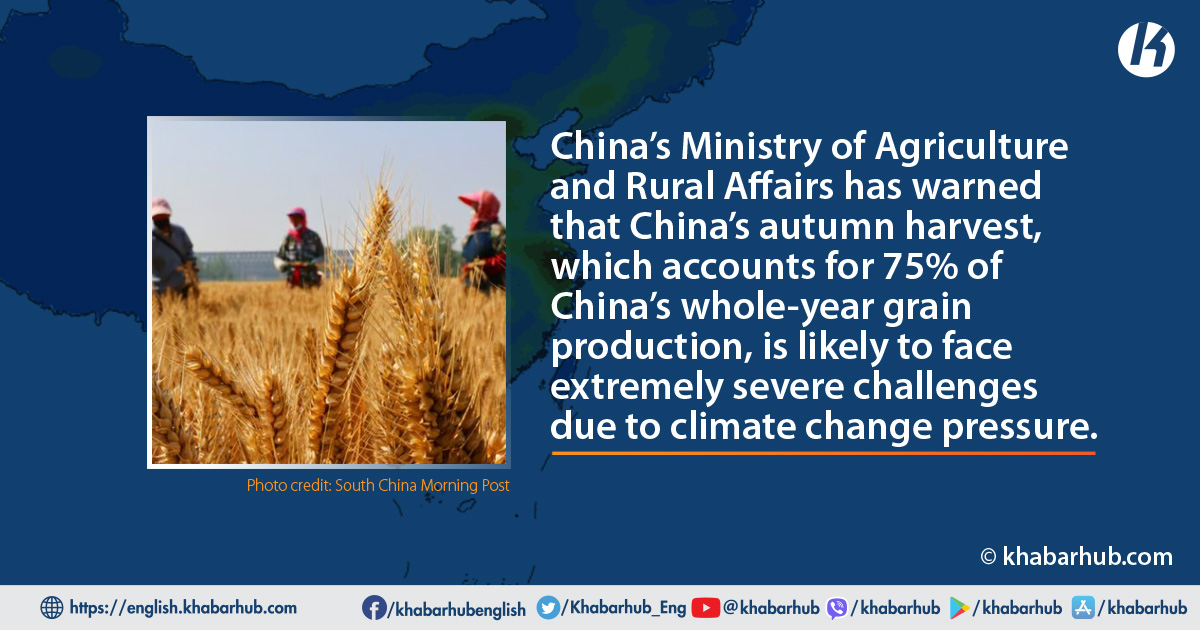The recent statement of President Xi Jinping highlighting food security as a major issue for the country and arable land as the ‘lifeblood of food production’ indicates the Chinese leadership’s concern over its limited food resources. Xi Jinping has even publicly linked food supplies to national security.
The Chinese leadership realizes that prioritizing food security is a prerequisite to maintaining social stability. During the Covid-19 lockdown pandemic, disruptions in the food supply and lockdown-induced food shortages sparked a wave of protests in more than a dozen cities, with demonstrators demanding food.
The No.1 Document for 2023, an indicator of policy priorities for agriculture and rural areas, also underlined the need for prioritizing food security for the growing population. It called for a robust supervision system to improve China’s food safety.
Though Xi Jinping has pushed for more self-sufficiency in the food supply, the self-sufficiency rate has fallen from around 100% in 2000 to 76% in 2020 and is further expected to decrease to 65% by 2035.
China also imports more than 80% of the soybeans it consumes each year from the US, Brazil and Argentina. Nearly 30% of China’s corn was imported from Ukraine last year. This can also prove to be a vulnerability for China in case of any Western sanctions.
The fall in China’s summer wheat output by 0.9% this year, the first decline in seven years after heavy rain hit key growing areas just ahead of the harvest, is likely to further impact the country’s overall food self-sufficiency rate.
Food self-sufficiency is always going to be a challenge for the Chinese leadership. China accounts for about 20% of the world’s population, but it has less than 10% of its arable land. According to research funded by the Chinese Agriculture Ministry droughts and heavy rainfall could reduce yields of staples in China by 8% by 2030.
Moreover, China’s arable land also suffers from severe degradation, acidification and contamination from heavy metals. It is estimated that nearly 40% of China’s arable land has degraded. While roughly 14.5% of arable land has been severely acidified, an estimated 16% of soil has been contaminated by heavy metals.
Researchers point out that by the time China achieves an urbanization rate of 70% by 2030, the country is likely to lose about 3.3 million acres of high-quality arable land.
In order to boost grain production, more and more forestland in China is being converted into farmland. However, this has increased soil erosion and caused increased flooding. Chinese citizens have turned to social media to voice criticisms, sharing videos of felled forests and severe soil erosion in newly developed farmland.
The lower food grain production is expected to increase China’s imports of staples. China was the world’s largest importer of wheat in 2022, importing about 12 million tonnes of wheat.
However, China has to contend with mounting challenges amid growing tensions with the US and its allies, which are major food suppliers, and a volatile global market due to the war in Ukraine. It has for many years imported wheat mainly from Australia, Canada, and the US. Though it has tried to diversify imports after tensions with the US, the Ukraine-Russia War has significantly impacted China’s external food supplies.
China’s Ministry of Agriculture and Rural Affairs has warned that China’s autumn harvest, which accounts for 75% of China’s whole-year grain production, is likely to face extremely severe challenges due to climate change pressure.
Increasing import dependency for key food items would worsen China’s food security as any disruption in the global food supply chain would have a serious impact.
China also imports more than 80% of the soybeans it consumes each year from the US, Brazil and Argentina. Nearly 30% of China’s corn was imported from Ukraine last year. This can also prove to be a vulnerability for China in case of any Western sanctions.
With China’s economy already facing headwinds due to low consumption, property crisis, rising debt among local governments, falling exports and low industrial productivity, a food crisis would further hit the economy.
According to various Chinese agencies, China may face adverse climate conditions in 2023 due to El Nino. While the North may face water-related disasters, the South is likely to face drought.
China’s Ministry of Agriculture and Rural Affairs has warned that China’s autumn harvest, which accounts for 75% of China’s whole-year grain production, is likely to face extremely severe challenges due to climate change pressure.








Comment